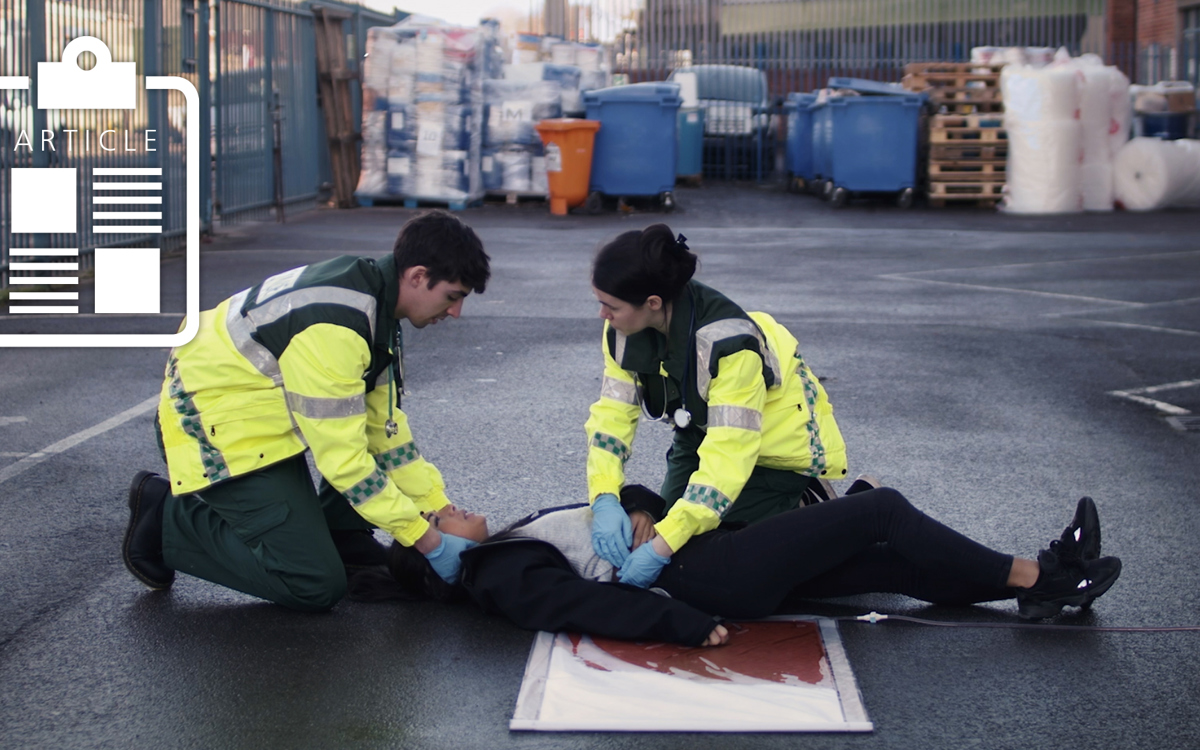The Use of Blood in Trauma Simulations
For most people, the sight of blood is alarming and frightening, especially if that blood is caused by a traumatic injury to someone we love. For health care teams, the sight of blood triggers the need for action, the need to assess and stabilize a patient.

While many healthcare teams treat patients with uncontrolled bleeding, those working in pre-hospital, emergency, and trauma are likely to encounter these patients daily. Regardless of the frequency or the level of experience in dealing with actively bleeding patients, research shows us that it is nearly impossible to accurately estimate the amount of blood loss by visualizing it.1 It has also been proven that there is a tendency to overestimate low blood loss and underestimate high blood loss. “When translated into clinical practice, overestimation may result in unnecessary and costly interventions, and, perhaps more importantly, underestimation may delay or deter identification and diagnosis of what is truly a hemorrhage”.1
Trauma can occur because of violence, road traffic accidents, or other injuries. But regardless of the reason for the traumatic injury, “hemorrhagic shock consistently represents the second-leading cause of early deaths among the injured, with only central nervous system (CNS) injury consistently more lethal”.2 In fact, hemorrhage is said to account for “30-40% of trauma deaths… within the first hour of trauma center care”.2
Knowing that we struggle to visually estimate blood loss, and that teamwork is essential in saving the life of a hemorrhaging patient, trauma cases are perfect simulation scenarios. However, despite all that we understand to be true about the need to recognize blood as a prompt for action, many simulation centers remain reluctant to use simulated blood as part of their scenarios. When asked about this hesitancy, personnel state several reasons:
- Simulated blood is too messy to clean up.
- Time does not allow for the use of any kind of blood.
- Simulated blood may clog the system of mannequins.
- Participants are asked to “suspend disbelief.”
The concept of suspension of disbelief (SOD) is common in simulation circles. This notion asks the participant to “believe the unbelievable and resist judgment of the simulation's authenticity—the cognitive act of accepting an imposter (simulation) as genuine (clinical).”3 The ultimate hope is that the learner will become so immersed in the experience that they feel it is real, thus allowing them to respond appropriately in an actual clinical event. However, this SOD is less likely to occur if the environment is not realistic enough to allow the learner to feel and experience the likeness of real patient care.3 Therefore, it is reasonable that scenarios including a hemorrhaging patient are more believable if the learners are prompted to action at the sight of blood.
So, what if you could use simulated blood, easily quantify blood loss with any scale, control the flow of blood, quickly switch to a clean pad between simulation groups, and return used blood back into the reservoir without any mess? Would these things make life easier and simulations more realistic? At Limbs & Things, we believe our new, patent pending Clean Bleed™ Mat will do just that. After receiving many requests from our customers over the years, our Research & Development team has created an innovative way to simulate hemorrhage easily, providing a more realistic learning experience whether using task trainer, mannequin, or even simulated patient scenarios. And, using either battery or electric power, the portable mat is easily used indoor and outside, beginning with pre-hospital care, and continuing through to the trauma operating room teams.
References:
1: Blood Loss: Accuracy of Visual Estimation
2: Impact of Hemorrhage on Trauma Outcome: An Overview of Epidemiology, Clinical Presentations, and Therapeutic Considerations
3: Exploring Suspension of Disbelief During Simulation Based Learning
Did you like this article?
Share it on social media today and remember to tag us!

